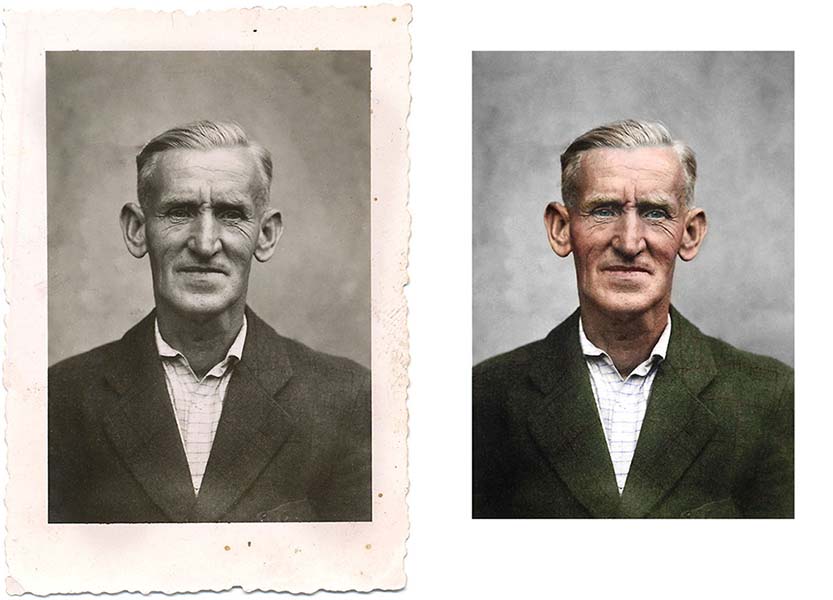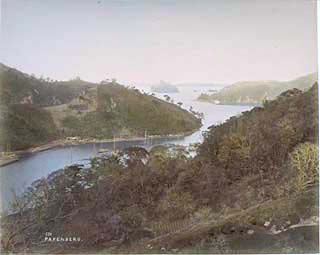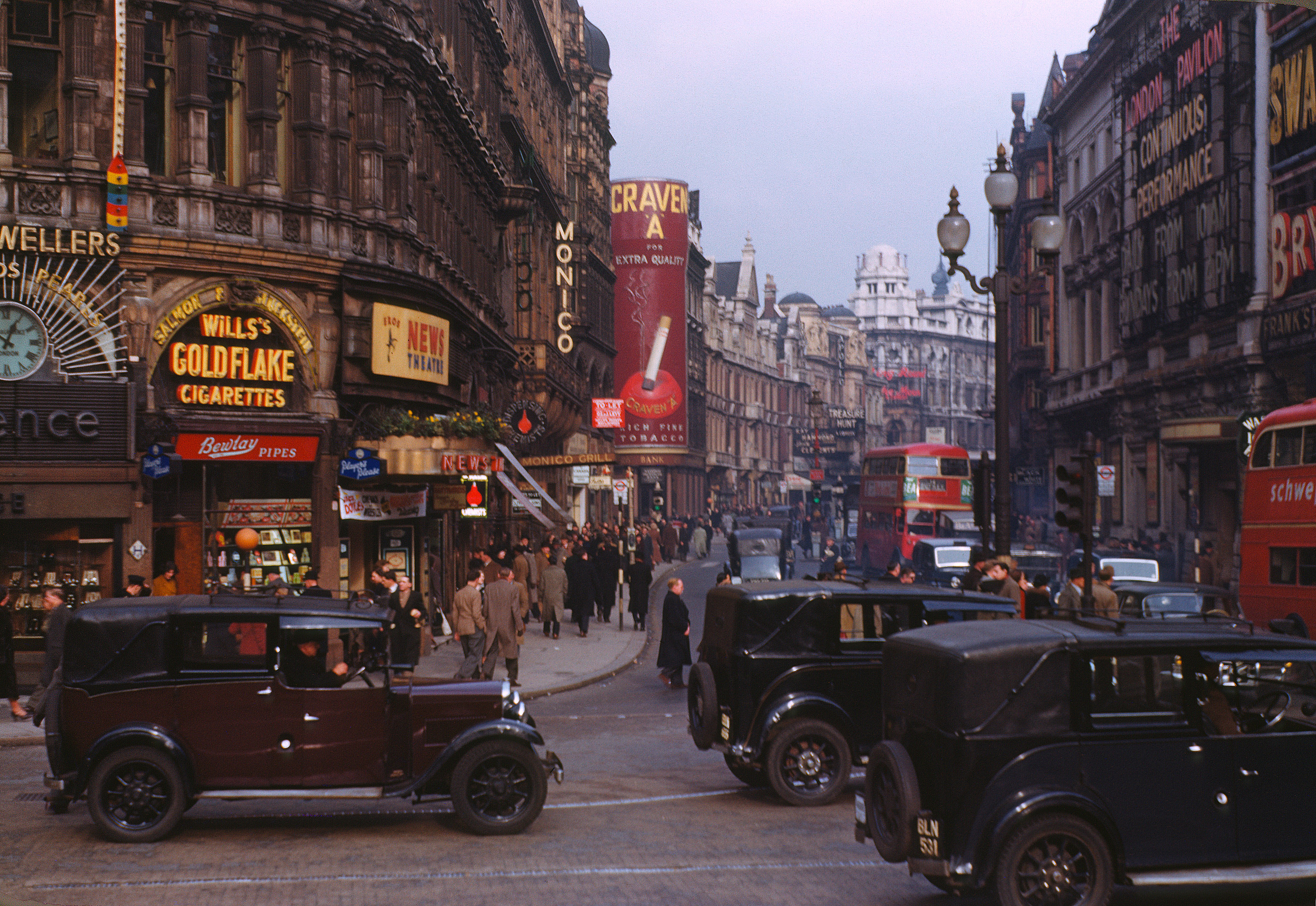
History of photo colorization
The Beginnings of Photo Colorization
The history of applying color to photographs is almost as old as photography itself. People back then were used to looking at colorful paintings and always felt as if something was missing from black and white photographs. Therefore photographers from the very beginning tried as best as they could to introduce color into their photographs. The first attempts dyed or tinted entire photographs in a blue or red hue such as cyanotypes or sepia tones. The colorization of black and white photographs has a long and interesting history from these rudimentary beginnings. Today all these effects are most commonly done digitally with programs such as Photoshop or Lightroom.
Coloring photographs by hand
Up until the mid-1940s the majority of all photographs were black and white due to limitations in modern techniques and technologies. This meant that to create a color photograph was an involved and lengthy process. A photo had to first be taken, developed, and printed before someone sat down to hand paint this final print. As this was naturally a very time-consuming process only a very few people were able to afford such a process and artifact.
The first artist to create such handpainted photographs was the Swiss painter Johann Baptist Isenring. He applied acacia gum and pigments to his photographs around 1839.
Hand coloring photographs and Japanese craftsmanship
Although the process of hand coloring photographs was invented in Europe it eventually became hugely successful in Japan.
The Japanese were at this time very familiar with colorful wooden prints of landscapes and scenes of daily life. This artistic tradition made them very eager to apply their skills to add colour to their photographs. Over the decades Japanese and European artists inspired each other and the techniques gradually evolved and become more sophisticated through cultural exchange.
One of the oldest hand-colored photographs from Japan:

View of Takaboko Island, near Nagasaki, Japan, possibly by Ueno Hikoma or Stillfried & Andersen, between 1862 and 1885

View of the coastline near Nagasaki showing Takaboko Island (also known as Pappenberg Island) in the distance, Japan, possibly by Ueno Hikoma or Stillfried & Andersen, between 1862 and 1885 (Hand-coloured albumen print)
Different techniques for different purposes
In photo restoration, we have different tools for dealing with different sorts of damages. The same was true for coloring photographs. Specific techniques were applied for specific desired results. These techniques were in turn largely dependent on the materials just as in painting. The principal materials and techniques used singly and in combination by different artists were:
– watercolors
– dyes
– oils
– crayons and pastels
Storage and preservation
It is crucial to store photographs properly. This is especially true for hand colored photos and vintage prints. As the colors are only applied to the surface of a photograph they never actually become a complete part of the photographic print. Being a delicate surface as such there is always the risk of the image being scratched or blurred with any handling. Other factors such as humidity and high temperatures also play an important role in the preservation of a photograph. Not long ago, once a photo was damaged it was lost forever. Today digital photo restoration services and retouching professionals are able to restore these pictures from all sorts of damages including cracks, blurrings, and watermarks.
Color Photography
This first color photograph, as opposed to a painted black and white photo, was created by James Clerk Maxwell in 1861. He ingeniously figured out that one can produce every color through differing combinations of red, green, and blue. With this in mind, he asked a friend and photographer of his to take three photos of the same single object and perspective. For each shot, the photographer was to attach a different color filter to the lens. That’s right, one red, one green, and one blue. After printing each of those photographs onto a glass plate the two friends positioned the glass plates behind three separate projectors. Each projector was respectively equipped with the filter that was used to take the original glass print. The three photos were finally superimposed upon one another in projection and depicted for the first time a representation of the subject’s original colors. Even today in the digital age the technology and techniques through which colors are reproduced are founded upon the same theory.

Tartan Ribbon, photograph taken by James Clerk Maxwell in 1861. Considered the first durable colour photographic image, and the very first made by the three-colour method Maxwell first suggested in 1855.

A picture of Mohammed Alim Khan (1880-1944), Emir of Bukhara, taken in 1911. This is an early color photograph taken by Sergei Mikhailovich Prokudin-Gorskii as part of his work to document the Russian Empire. Three black-and-white photographs were taken through red, green, and blue filters. The three resulting images were projected through similar filters. Combined on the projection screen, they created a full-color image.
Color Photography
Although it’s easy for us in the digital age to take it for granted that digital photographs are first of all by default color images but there is in fact a long story of technological progress connecting the first black and white photograph to the digital images of today. Even though as we said the theory behind creating color photographs hasn’t fundamentally changed ever since Maxwell’s invention, it took almost 70 more years after the first color photograph before ordinary people were also able to produce their own color images. In 1935 Kodak was the first company to realise such a product in the form of the now legendary Kodachrome. Kodachrome truly marks the beginning of modern color photography. The film combined three different layers of emulsion in one film. Just like Maxwell’s first color photograph, there were three layers of green, red, and blue. This technology made color photography simple as well as affordable for everyday customers. Even today Kodachrome is celebrated for its vivid colors and breathtaking look.
Steve McCurry spoke about Kodachrome in 2011:
“If you have good light and you’re at fairly high shutter speed, it’s going to be a brilliant color photograph. It had a great color palette. It wasn’t too garish. Some films are like you’re on a drug or something. Velvia made everything so saturated and wildly over-the-top, too electric. Kodachrome had more poetry in it, a softness, an elegance. With digital photography, you gain many benefits [but] you have to put in post-production. [With Kodachrome,] you take it out of the box and the pictures are already brilliant.”

Kodachrome photo by Chalmers Butterfield of Shaftesbury Avenue from Piccadilly Circus, in the West End of London, c. 1949.
Soon after Kodak introduced their first color film other companies such as Agfa and Fuji followed. From then on color photography became widely available and affordable enough for almost everyone to use. The advent of the color film also marked the end for hand-painted photographs.
Photo Coloring and Photo Restoration Today
Photo coloring together with photo restoration is once again becoming more and more popular. We all know how often it’s only with the distance of several years that we begin to truly value our past memories. Unfortunately, a large number of old photographs become damaged in those intervening years and need repair. This is as much true for hand-colored photographs as for black and white vintage prints. Back in the day, hand coloring a photograph was artistic craftsmanship which was mainly performed by skilled painters and artists.
The tools available to us today have changed significantly and have as a result revolutionized the process itself. What remains the same however is the need for real knowledge, expertise, and experience that comes through professionals. For consistent and high-quality results, one does not only need years of experience in understanding how to treat cracks, faded areas, or other damages but also needs a deep understanding and appreciation of historical trends in photography. This is especially true for realistically coloring photographs. As most of the objects or people aren’t going to exist anymore one can only recreate the original color by looking at the history books and other comparable historical photographs.
If you are interested in getting your old photographs professionally repaired or colorized you should always ask a professional photo restoration like us to do so. This ensures the most beautiful and accurate results.